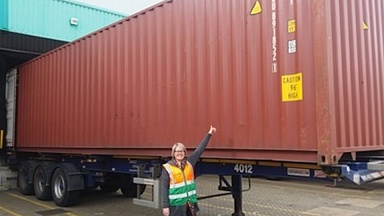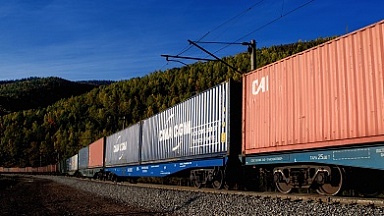Russian transportation companies will continue to increase profits in 2022-2023.
The non-energy market has become the growth driver for carriers. Their revenues are growing, including due to an increase in logistics freight rates: rail and road transport tariffs will increase by up to 10% in 2022.
Why freight transportation made a profit
After falling in the pandemic 2020, freight turnover of rail transport in the first half of this year amounted to 1,304 billion ton-kilometers and almost reached the level of the same period before the pandemic (2019), road transport — 75 billion ton-kilometers (+4%), water transport (marine and inland water) — 44 billion ton-kilometers (+2%), aviation — 4 billion ton-kilometers (+21%), it follows from the Ministry of Transport data.
Freight transportation was the main revenue earner in 2020, while most passenger traffic was unprofitable. According to the National Credit Ratings (NCR) report this situation will continue at the end of 2021 and for at least two more years.
Which companies were the most profitable
NCR experts found that while earlier figures were higher for rail transport (16%), in 2020 air (25%) and marine transport (11%) came in first place in terms of profitability. And the profitability of railway freight sales became negative (-1%).
Over the past two years, container shipping and overseas transportation rates have increased significantly. The World Container Index (WCI) and the Baltic Dry Index (BDI) jumped twice in 2020 and continue to rise — by 150% and 175%, respectively, since the beginning of 2021. Because of this, imported consumer goods will continue to rise in price in 2022.
Tariff increases and logistics disruptions will improve the financial performance of companies implementing multimodal transportation. About 5.8 million loaded and empty 20-foot containers (TEU) were transported through the Russian Railways network in 2020, a 15.9% increase over 2019, the Russian monopoly reported. By the end of 2021 it is expected to increase the Russian container market by 10.5-11%, the company’s press-service said to RBC. But growth will slow to 9% in 2022.
Air cargo shipments are also on the rise. Compared to the pre-pandemic level, they have tripled. Finnair has begun to carry cargo on empty planes as well, although it is usually done with passengers.
What causes passenger traffic to lag behind
In contrast to freight transport, none of the segments of passenger transport has yet recovered, according to data from the Ministry of Transport. In the first half of 2021, civil aviation passenger traffic was 91 billion passenger-kilometers (pkm), down 20% from the same period in 2019. On the railroad it also decreased by 20%, to 46 billion pkm, passenger transportations by road and inland waterway transport — by 22% (to 43 billion and 0.1 billion pkm respectively), marine — by 23% (to 0.01 billion pkm).
The loss of the largest Russian passenger airlines in 2020 exceeded 120 billion rubles against the background of quarantine measures and stagnating incomes. In 2021, they have just begun to recover: passenger traffic on domestic airlines in the first half of the year reached 71 billion pkm. At the same time, rail passenger transportation in Russia «was very much in demand,» the NCR points out.
Analysts are confident that overall profits and volumes of rail passenger traffic will recover in 2022, air traffic — only in 2024.



